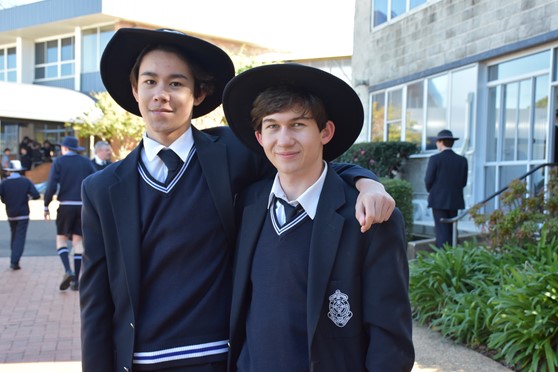Media releases
WELCOME BACK TO SCHOOL, WHAT CATHOLIC SCHOOLS LEARNED FROM THE COVID CRISIS
 St Mary's College students happy to be re-connected.
St Mary's College students happy to be re-connected.
This week the Diocese of Toowoomba Catholic Schools welcomed a full complement of students back to school. The return to the classroom seems to have created much excitement in school communities with students, teachers and parents appreciative of this step towards life after lockdown.
Attention is now turning to the lessons learned through the COVID-19 crisis. Dr Patrick Coughlan: Executive Director, Catholic Schools said, “through the lens of a global pandemic our routine assumptions and people’s behaviour, have been seriously challenged. This has led to new ways of thinking and working, particularly in our schools, some of which will no doubt remain moving forward. What I have particularly noted is…
- Nothing can replace teachers in the education process. Technology has supplemented teaching and teachers; not replaced them. What has become clear is that without the care and support of their teachers, many young people, especially our most vulnerable children, have struggled to stay connected and focused.
- People mobilise amazingly quickly in a crisis. This has been the case everywhere, but particularly in schools. It is heartening to see the extraordinary effort and expertise of teachers and principals being affirmed and praised in the general community, with a renewed sense of appreciation and greater understanding of the specialised work of schools.
- Innovation and change come at a price. The pace of change and adaptation to new and unfamiliar ways of working is mentally and physically demanding. Attention to mental and physical wellbeing is crucial to maintaining hope and confidence in times of uncertainty.
- A world class education is the greatest act of social justice possible. The entrenched inequity which exists within and between groups in our community has been laid bare by this pandemic. The importance and urgency of education as a circuit breaker to poverty and disadvantage is clear. Education closes the gap in areas essential to human flourishing such as health, housing and employment. Education is what we know and what we do best.
- The school frequently represents a haven for calmness and reassurance for children. The lives of modern families can be frantic and time poor. After the family, the child’s teacher is the most influential person in the child’s life. Students thrive in the company of their peers, teachers and school staff, people they admire and respect, and who make them feel good about themselves and their valuable place in the world.
My hope is that we use these lessons to imagine a better kind of “normal” for the future of Catholic education.”

